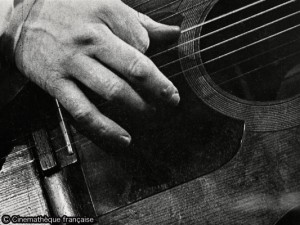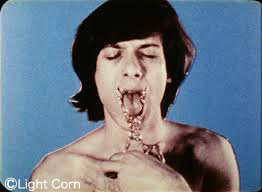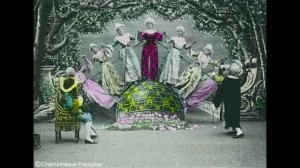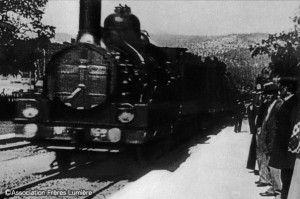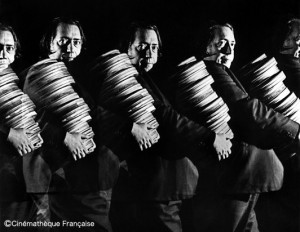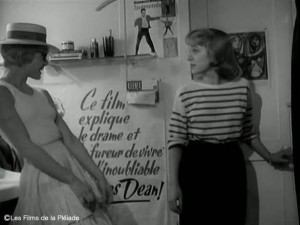■The Fall of the House of Usher Directed by Jean Epstein、Year: 1928、Running time: 63 min、Country: France ■Le M…
Retrospective Henri Langlois
-
(日本語) シネマテーク・フランセーズ『最初の上映 – シネクラブ』
Sorry, this entry is only available in 日本語.
-
Sorry, this entry is only available in 日本語.
-
Sorry, this entry is only available in 日本語.
-
Sorry, this entry is only available in 日本語.
-
(日本語) シネマテーク・フランセーズ『アンリ・ラングロワとは何者か?』
Sorry, this entry is only available in 日本語.
-
(日本語) シネマテーク・フランセーズ『ヌーヴェルバーグ、その後』
Sorry, this entry is only available in 日本語.
-
(日本語) シネマテーク・フランセーズ『アンリ・ラングロワの美術館』
Sorry, this entry is only available in 日本語.
“Henri Langlois, Recalled to Hiroshima.”
By Hidenori Okada
In 1958, Alain Resnais went to Japan before beginning to shoot Hiroshima Mon Amour to choose his lead male actor. Eiji Okada was among the candidates shortlisted to play Emmanuelle Riva’s lover. Resnais asked to see one of Okada’s films, but had a very difficult time locating any. When he finally did manage to see one, then playing in a movie theater, he wrote to Marguerite Duras, “Apparently, they don’t keep films in Japan, so it’s very difficult to screen an old film”. Sadly, Resnais was on the mark. What was surely at the back of his mind was the Cinémathèque Française – a repository of cinematic history located in Paris – and its legendary founder, Henri Langlois.
Langlois dedicated his life entirely to preserving cinema's heritage. With every film he found, with every film-related object he collected and every screening he hosted, Langlois created a vast space for exploring the meaning of film and its significance for the world. He recognized old, forgotten films as a priceless form of art, and he gathered them in with relentless enthusiasm, even if they no longer had any commercial value. His family’s apartment overflowed with thousands of film cans. With time, significant filmmakers all over the world came to recognize the importance of his vision and donated their films to him, most famously Charlie Chaplin.
The Cinémathèque was born in 1936 out of Langlois's attempts to prevent our cinematic heritage from being lost. During the World War II, Paris went virtually dark and the lights of the cinema were rendered very difficult to be preserved. When the war ended, Langlois could again expand his collecting mission and resume his film screenings: screenings that provided a critical visual and sensory education to generations of French filmmakers. Among his appreciative audiences were many future film directors as well as young cinephiles who began to write about film as a serious, critical cultural force. Few had experienced hands-on work in film studios. Cinémathèque offered them an alternative entry point, and they opened up new terrain in the art of filmmaking, visually inspired by earlier films. The “Nouvelle Vague” which they created changed film history.
The beginning of this vast undertaking, the Cinémathèque - whose importance cannot be overstated - was a private institution created by Langlois, not a state initiative. The French government by and by worked to nationalize the project, even managing to remove Langlois as its director in 1968. However, France’s major filmmakers and the towering figures in French and foreign film rose up to register their outrage with the French government and their support for the legendary founder of the Cinémathèque. Looking back, the “Langlois Affair” was clearly the first in a series of events leading up to May 1968 in France.
Langlois's many enemies were not entirely wrong about him. His idealistic attitude toward film led him to cast his wide net and attempt to control all activities of the Cinémathèque himself. Not surprisingly, his collection rapidly evolved into something bordering on chaos. Langlois's methods were also unorthodox, for he chose to screen even the sole remaining print of a film remaining anywhere in the world. A portion of the Cinémathèque collection was lost to a nitrate fire in 1959. The atmosphere of suspicion and controversy surrounding the fire contributed to a long-lived rift between the International Federation of Film Archives (FIAF) and the Cinémathèque, and the dispute between the two bodies had still not been resolved by the time Langlois died in 1977. The world’s cinema powerhouse needed to adopt a more systematic approach to film preservation to realize its goals.
Despite these setbacks, the breadth of Langlois's vision and the depth of his aspirations never abated. After the “Langlois Affair” of 1968, he inaugurated the “museum of cinema” at the Palais de Chaillot in Paris in 1972. His hard-fought spirit lives on in the present-day Cinémathèque, with its lively yet balanced film screening and preservation programs.
A half-century has passed since Alain Renais set foot in Hiroshima. The city remains a forceful open-ended warning against the erosion of memories. In this spirit, Japan’s National Film Center has undertaken a major initiative to collect, restore, and preserve films from across cinematic history: The collection of the Hiroshima City Cinematographic and Audio-Visual Library offers a thrilling treasure chest for global citizens. Why our passion for Langlois? Invoking the charismatic Langlois in Hiroshima not only reminds us of the importance of preserving our cinematic heritage. It is also our attempt to pay homage to a great and shared enthusiasm for film. It creates a vivid reminder of our own capacity to render the world and its memories more meaningful across time and generations. Langlois surprised the world with his vision and continues to do so.

